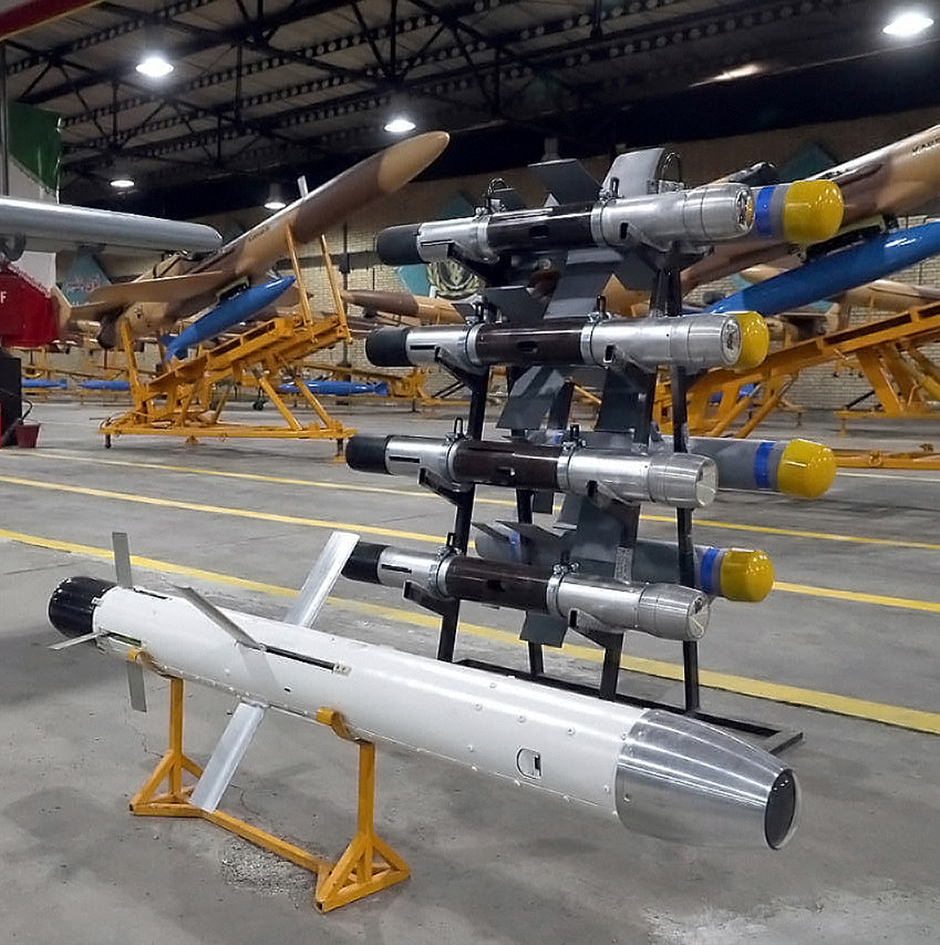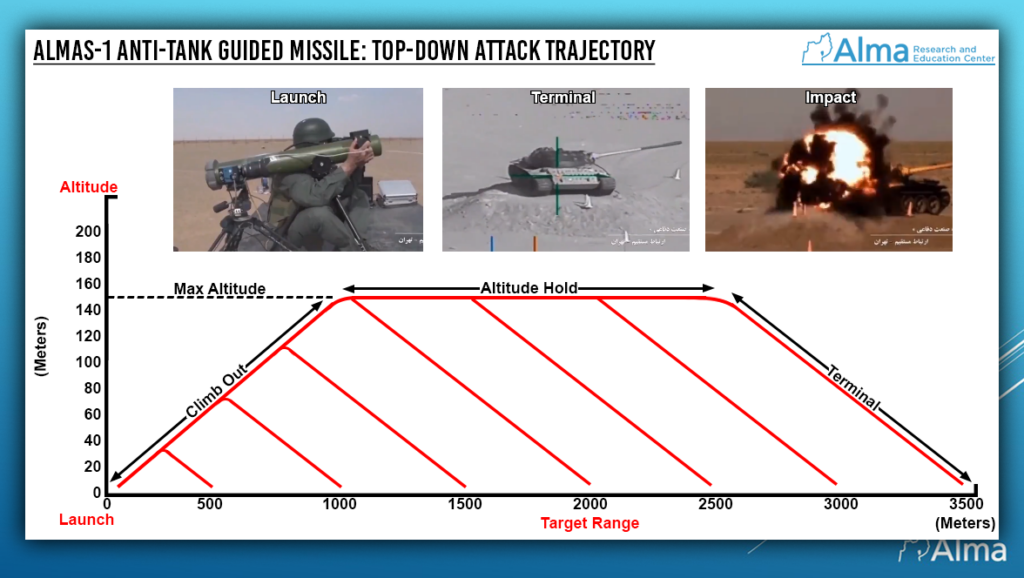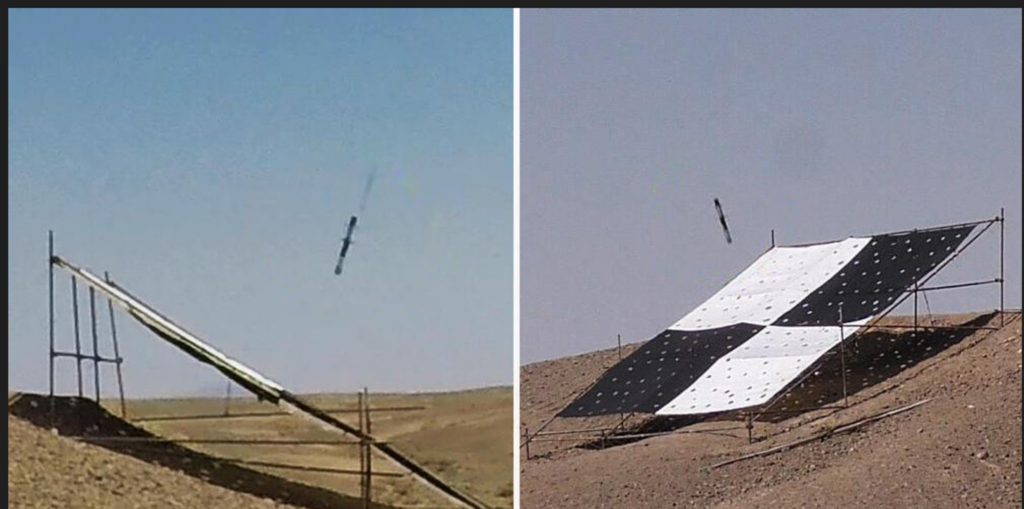By Yair Ramati and Yaakov Lappin
The Almas (‘Diamond’ in Persian) is an anti-tank guided missile (ATGM) manufactured by Iran, and possessed by Hezbollah. It is an additional precision weapon in the possession of the Shiite axis led by Iran.
The Almas missile family is a product of reverse engineering, based on the Israeli Spike missile family, which was designed and manufactured by Rafael.
This represents a significant technological and engineering achievement by the Iranian defense industry, based on a strong and advanced Iranian missile technology infrastructure. The missile is another flagship product of the Iranian defense industry.
The new generation of anti-tank guided missiles (ATGMs) with various warheads reflects advanced operational capabilities beyond previous variants. According to international media reports, Israeli Spike missiles reached Iran through Hezbollah captures of it during the Second Lebanon War in 2006, which were transferred to Iran.
The Iranian industry’s reverse engineering process is not unique to this missile. According to Western media reports, the same has occurred in areas such as UAVs, radar systems, air defense missiles, rocket launchers, and more.
These capabilities reflect the relatively high technical level the Iranians have achieved over the past two decades. It relies on an infrastructure of local technological subsystem suppliers that reach the large system manufacturers assembling the current generation of Iranian missiles and UAVs industries.
According to several sources, so far, at least three launches of the Alma missile family have been carried out by Hezbollah, as part of the current escalation in the north.
One launch was toward an Israeli military site in the border area, and the others were toward IDF armored vehicles in the north.
The missile has three versions:
Almas 1, Almas 2, and Almas 3. Each version presents an upgrade in the missile’s range, warhead, performance, and guidance systems. The different versions are equipped with an advanced tandem anti-tank warhead, allowing for deep armor penetration.
These are the known missile ranges:
• Almas 1: Up to 4 km.
• Almas 2: Up to 8 km.
• Almas 3: Up to 16 km.


Attacking beyond the line of sight. The Almas missile family is not just a traditional anti-tank weapon attacking along the line of sight (LOS), i.e., based on sighting the target through the sight. It is also capable of hitting targets beyond the line of sight (BLOS), following a trajectory that is arched (high angle), which ultimately enables an attack from above on the target, offering lethality against armor.

The ability to hit a target beyond the line of sight range allows for two things. First, a significant extension of the hit range. Second, the ability to steer the missile to its target by the operator, similar to the American Javelin ATGM.
Launch platform. The Almas missiles can be launched from a variety of platforms, ranging from tripod launchers that can be carried by operatives to a compact launcher. The heavier and longer-range Almas 3 missile can be launched from a vehicle or a UAV. We cannot determine at this time which version of the missile was recently launched by Hezbollah against Israeli targets, as the type of launcher is not known to us.

Guidance system. This advanced missile family is equipped with an electro-optical imaging guidance seeker (one that ‘sees’ the target and its surroundings in every frame at video rate) for day and night, which performs a variety of activities including target acquisition, tracking, and precise target lock-on.

‘Fire and forget’ –
The missile can be locked onto its target from the outset or navigate based on inertial navigation to the desired area and acquire the target later, with the operator making fine adjustments remotely. Such capabilities were well demonstrated in a video published by Hezbollah, in which the missile is seen approaching the target that gradually grew larger in the field of view.
Have the Iranians succeeded in endowing these missiles with future capabilities for autonomous target acquisition (ATR – Automatic Target Recognition)?
In our assessment, this issue is still in doubt, however, we clarify that this is the general direction in which the UAVs, drones, and missile industries in the world are heading. Sooner or later, the Iranian defense industry will know how to close this gap.
Summary and Key Implications. The Almas missile is a precision anti-tank weapon that has moved from Iranian weapons depots directly to our theater of operations. Such weaponry poses a challenge to most stationary and mobile targets in border areas. It’s not just about armored military vehicles, but also sensitive and ‘soft’ facilities located within the firing range of the Almas family.
The degree of ‘soft’ and ‘hard’ defense and protection against these missiles requires separate consideration, which must take into account the ongoing arms race between the overall offensive capabilities held by Hezbollah and Iran at large, and the various Israeli defense systems.
It is highly likely that weapons from the current and future Almas family will be deployed across all fronts inhabited by Iranian proxies, and that the missiles will threaten a variety of high-quality targets (not only Israeli) over increasing ranges.
What happens in the Middle East does not stay in the Middle East…






